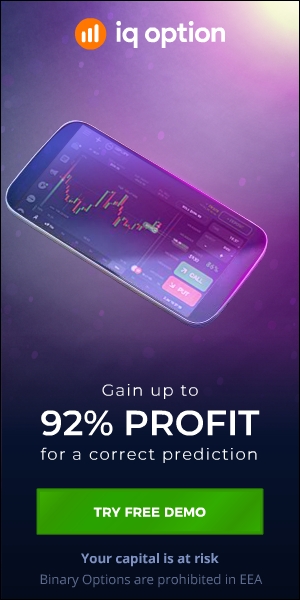“`html
The Traceability of Cryptocurrencies: An In-Depth Analysis
Cryptocurrencies have revolutionised the financial landscape, offering a decentralised and often anonymous way to conduct transactions. However, the question of whether these digital currencies are traceable remains a topic of significant debate. This article delves into the intricacies of cryptocurrency traceability, exploring the technology behind it, the methods used to trace transactions, and the implications for users.
Understanding Cryptocurrency Technology
To comprehend the traceability of cryptocurrencies, it is essential to first understand the underlying technology. Cryptocurrencies operate on blockchain technology, a decentralised ledger that records all transactions across a network of computers.
Blockchain Basics
The blockchain is a chain of blocks, each containing a list of transactions. These blocks are linked together using cryptographic hashes, ensuring the integrity and immutability of the data. The decentralised nature of the blockchain means that no single entity controls the entire network, making it resistant to tampering and fraud.
Public vs. Private Blockchains
There are two main types of blockchains: public and private. Public blockchains, such as Bitcoin and Ethereum, are open to anyone and offer a high degree of transparency. Private blockchains, on the other hand, are restricted to a specific group of participants and offer more privacy.
Methods of Tracing Cryptocurrency Transactions
Despite the perceived anonymity of cryptocurrencies, several methods can be used to trace transactions. These methods leverage the transparency of public blockchains and advanced analytical techniques to track the flow of funds.
Blockchain Analysis
Blockchain analysis involves examining the transaction history recorded on the blockchain to identify patterns and connections. This can be done using specialised software that can trace the movement of funds between addresses.
- Transaction Graph Analysis: This method involves creating a graph of transactions, where nodes represent addresses and edges represent transactions. By analysing the graph, it is possible to identify clusters of addresses that belong to the same entity.
- Heuristic Analysis: Heuristics are rules of thumb that can be used to infer information about transactions. For example, if multiple transactions are made from the same address within a short period, it is likely that they are controlled by the same entity.
IP Address Tracking
When a cryptocurrency transaction is made, the IP address of the sender can sometimes be recorded. By tracking these IP addresses, it is possible to trace the origin of the transaction. However, this method is less reliable as users can use VPNs or Tor to hide their IP addresses.
Exchange Data
Cryptocurrency exchanges often require users to provide identification information. By obtaining data from these exchanges, it is possible to link cryptocurrency addresses to real-world identities. This method is particularly effective for tracing transactions involving large sums of money.
Implications of Cryptocurrency Traceability
The traceability of cryptocurrencies has significant implications for various stakeholders, including users, law enforcement agencies, and financial institutions.
User Privacy
One of the main attractions of cryptocurrencies is the promise of privacy. However, the traceability of transactions can undermine this privacy, exposing users to potential risks such as identity theft and financial surveillance.
Law Enforcement
For law enforcement agencies, the traceability of cryptocurrencies is a double-edged sword. On one hand, it can help in tracking down criminals and recovering stolen funds. On the other hand, the anonymity provided by cryptocurrencies can make it difficult to identify and apprehend offenders.
Financial Institutions
Financial institutions can benefit from the traceability of cryptocurrencies by using it to monitor transactions and detect suspicious activity. However, they must also be aware of the privacy concerns and ensure that they comply with relevant regulations.
Case Studies: Tracing Cryptocurrencies in Action
Several high-profile cases have demonstrated the effectiveness of tracing cryptocurrency transactions. These cases highlight the methods used and the challenges faced in tracking down illicit activities.
The Silk Road Investigation
The Silk Road was an online marketplace that facilitated the sale of illegal goods and services using Bitcoin. Law enforcement agencies used blockchain analysis to trace the flow of funds and identify the individuals behind the marketplace. This led to the arrest and conviction of the site’s founder, Ross Ulbricht.
The Mt. Gox Hack
Mt. Gox was a cryptocurrency exchange that was hacked in 2014, resulting in the loss of 850,000 Bitcoins. Investigators used blockchain analysis to trace the stolen funds and identify the hackers. Although not all the funds were recovered, the investigation demonstrated the potential of blockchain analysis in tracing cryptocurrency transactions.
Challenges in Tracing Cryptocurrencies
Despite the advancements in tracing techniques, several challenges remain in tracking cryptocurrency transactions. These challenges stem from the inherent properties of cryptocurrencies and the evolving tactics used by criminals.
Mixing Services
Mixing services, also known as tumblers, are used to obfuscate the origin of cryptocurrency transactions. These services mix the funds from multiple users, making it difficult to trace the flow of funds. While some mixing services operate legally, others are used for illicit purposes.
Privacy Coins
Privacy coins, such as Monero and Zcash, are designed to offer enhanced privacy features. These coins use advanced cryptographic techniques to hide transaction details, making it extremely difficult to trace them. The use of privacy coins poses a significant challenge for law enforcement agencies and blockchain analysts.
Decentralised Exchanges
Decentralised exchanges (DEXs) allow users to trade cryptocurrencies without the need for a central authority. This makes it difficult to obtain user data and trace transactions. The rise of DEXs has added a new layer of complexity to the task of tracing cryptocurrency transactions.
Future Trends in Cryptocurrency Traceability
The field of cryptocurrency traceability is constantly evolving, with new technologies and methods being developed to address the challenges. Several trends are likely to shape the future of cryptocurrency traceability.
Advancements in Blockchain Analysis
As blockchain analysis techniques continue to improve, it will become easier to trace cryptocurrency transactions. Machine learning and artificial intelligence are likely to play a significant role in enhancing the accuracy and efficiency of blockchain analysis.
Regulatory Developments
While this article does not delve into regulatory aspects, it is worth noting that regulatory developments can impact the traceability of cryptocurrencies. Changes in regulations may require exchanges and other entities to implement stricter measures for tracking transactions.
Collaboration Between Stakeholders
Collaboration between law enforcement agencies, financial institutions, and blockchain analysts will be crucial in addressing the challenges of cryptocurrency traceability. By working together, these stakeholders can develop more effective strategies for tracing transactions and combating illicit activities.
Conclusion
The traceability of cryptocurrencies is a complex and multifaceted issue. While the transparency of public blockchains allows for the tracing of transactions, several methods and technologies can be used to obfuscate the flow of funds. The implications of cryptocurrency traceability are significant, affecting user privacy, law enforcement efforts, and financial institutions.
As the field continues to evolve, advancements in blockchain analysis and collaboration between stakeholders will play a crucial role in addressing the challenges. Ultimately, the traceability of cryptocurrencies will depend on the balance between privacy and transparency, and the ongoing efforts to develop effective tracing techniques.
Q&A Section
| Question | Answer |
|---|---|
| What is blockchain technology? | Blockchain technology is a decentralised ledger that records all transactions across a network of computers, ensuring data integrity and immutability. |
| How can cryptocurrency transactions be traced? | Cryptocurrency transactions can be traced using methods such as blockchain analysis, IP address tracking, and obtaining data from exchanges. |
| What are mixing services? | Mixing services, or tumblers, mix funds from multiple users to obfuscate the origin of cryptocurrency transactions, making them difficult to trace. |
| What are privacy coins? | Privacy coins, such as Monero and Zcash, use advanced cryptographic techniques to hide transaction details, offering enhanced privacy features. |
| What challenges exist in tracing cryptocurrencies? | Challenges include the use of mixing services, privacy coins, and decentralised exchanges, which make it difficult to trace transactions. |
| How can blockchain analysis be improved? | Blockchain analysis can be improved through advancements in machine learning and artificial intelligence, enhancing the accuracy and efficiency of tracing techniques. |
| What role do financial institutions play in cryptocurrency traceability? | Financial institutions can monitor transactions and detect suspicious activity, but must also consider privacy concerns and comply with relevant regulations. |
| What is the significance of the Silk Road investigation? | The Silk Road investigation demonstrated the effectiveness of blockchain analysis in tracing cryptocurrency transactions and identifying criminals. |
| What are decentralised exchanges (DEXs)? | Decentralised exchanges (DEXs) allow users to trade cryptocurrencies without a central authority, making it difficult to obtain user data and trace transactions. |
| What future trends are likely to shape cryptocurrency traceability? | Future trends include advancements in blockchain analysis, regulatory developments, and increased collaboration between stakeholders. |
“`


